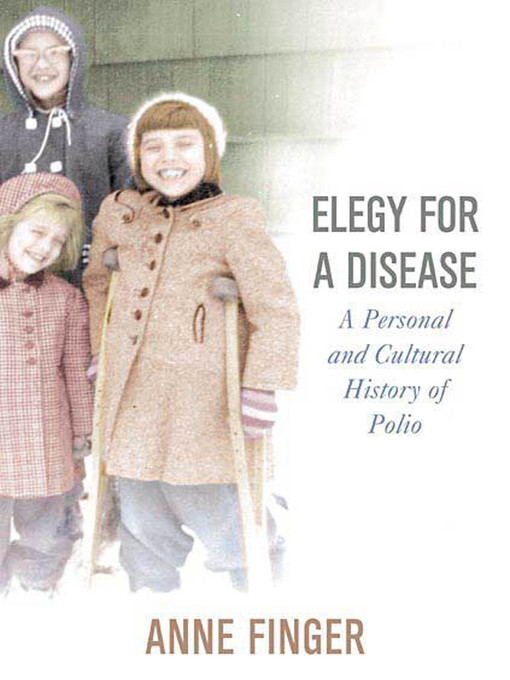During the first half of the twentieth century, epidemics of polio caused fear and panic, killing some who contracted the disease, leaving others with varying degrees of paralysis. The defeat of polio became a symbol of modern technology's ability to reduce human suffering. But while the story of polio may have seemed to end on April 12, 1956, when the Salk vaccine was declared a success, millions of people worldwide are polio survivors.
In this dazzling memoir, Anne Finger interweaves her personal experience with polio with a social and cultural history of the disease. Anne contracted polio as a very young child, just a few months before the Salk vaccine became widely available. After six months of hospitalization, she returned to her family's home in upstate New York, using braces and crutches. In her memoir, she writes about the physical expansiveness of her childhood, about medical attempts to "fix" her body, about family violence, job discrimination, and a life rich with political activism, writing, and motherhood.
She also writes an autobiography of the disease, describing how it came to widespread public attention during a 1916 epidemic in New York in which immigrants, especially Italian immigrants, were scapegoated as being the vectors of the disease. She relates the key roles that Franklin Roosevelt played in constructing polio as a disease that could be overcome with hard work, as well as his ties to the nascent March of Dimes, the prototype of the modern charity. Along the way, we meet the formidable Sister Kenny, the Australian nurse who claimed to have found a revolutionary treatment for polio and who was one of the most admired women in America at mid-century; a group of polio survivors who formed the League of the Physically Handicapped to agitate for an end to disability discrimination in Depression-era relief projects; and the founders of the early disability-rights movement, many of them polio survivors who, having been raised to overcome obstacles and triumph over their disabilities, confronted a world filled with barriers and impediments that no amount of hard work could overcome.
Anne Finger writes with the candor and the skill of a novelist, and shows not only how polio shaped her life, but how it shaped American cultural experience as well.
- Read Banned Books!
- Just Added eBooks
- Family Dramas
- Available now
- Dear Reader: Stories Told Through Letters & Diaries
- Most popular
- Adult Series Starters
- Try something different
- Celebrate Pi Day
- See all
- Oprah's Super Soul Conversations Listen-Alikes
- Available now
- New audiobook additions
- Read by a Celeb
- Most popular
- Try something different
- Author Interviews
- Great Narrators
- Family Reading Time
- Audiobooks for the Drive to Palm Springs
- Audiobooks for the Drive to Las Vegas
- Audiobooks for the Drive to San Francisco
- See all


